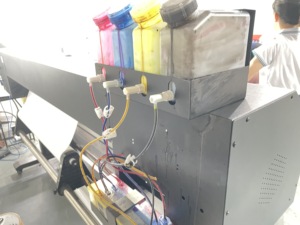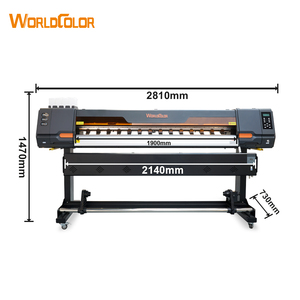(1352 products available)

























































































































































































The types of Summa cutter plotters are classified according to their features and capabilities, depending on the job's volume.
Flatbed cutters
Summa flatbed cutters are ideal for the precise cutting of large materials. Considering their accuracy, they are mainly used in the packaging sector or during the production of complicated designs. The flatbed structure allows easy loading of materials, thus giving broad cutting capabilities.
Roll cutters
These cutters are designed to cut vinyl or other flexible materials from a roll. This makes them particularly useful in the signage and graphic arts industries. Due to their efficient production, companies using large quantities of rolled materials will find this type of cutter practical.
Hybrid cutters
Hybrid cutters can be both roll and flatbed, offering businesses great versatility. In situations that require both kinds of cutting, hybrid summar cutters allow accommodation of both types of materials.
Table cutters
Table cutters are compact cutters primarily used to make cuts on a small scale or in limited volumes. Due to their tabletop size, these machines fit conveniently in any small office, where they can cut labels and decals, for instance.
A Summa cutter plotter comprises several important design components.
Cutter head
This is the component in which the cutting blade is housed. Depending on the material to be cut, the cutter's head will include features like adjustable blades or multiple blades for specific cutting functions.
Bed/roll system
The operational design of the cutter head will mainly depend on whether it is a flatbed or roll system. The flatbed has a completely flat surface on which materials are placed. However, roll systems pull materials from a roll.
Control software
The control software is integrated into the machine to convert design files into instructions. This helps in smooth cutting. The Summa cutters are based on proprietary software that can be compatible with other software.
Blades and tools
There are different types of blades meant for cutting different kinds of materials. Cutting vinyl requires a specific type of blade, while cutting thicker materials may require a deep cutting blade.
Safety features
Cutters and plotters are designed with features such as blade covers or auto shut-off functions to enhance safety for the operators.
Signage and graphics
This is particularly for cutting vinyl signs, decals, and window graphics in major advertising. They provide the level of accuracy that makes sure all graphics align and look professional.
Custom apparel
Plotters are also used in the generation of heat transfer vinyl designs for custom shirts, caps, and other wear. With a vinyl cutter, a cloth printer can mass-produce intricate designs on fabric.
Labels and decals
These cutter plotters are also suitable for printing labels, stickers, and decals in packaging. They are known for their rapid cutting, which enables efficient production in large quantities.
Automotive and marine industry
Vinyl cutters are frequently used in unique window tints and vinyl wraps in the automotive and marine sections. They ensure that materials are accurately and efficiently cut to create perfect fits for application.
Architectural models
Cutters are also used to cut architectural paper or other materials for the design of the model. Such cutting requires a high level of accuracy in a small scale design, which makes it ideal for the Summa plotters.
To better understand the product and to make it work, both the specification and maintenance parts of the Summa cutter plotters are essential.
Key specifications
Several key specifications need to be looked at to determine the suitability of a cutter plotter for a given job. These key features include cutting force, size of cutting area, range of material compatible with the cutter, and speed of cutting.
Software integration
Many plotters need to be compatible with design software that is mostly used in creating cut files. Henceforth, knowing if the plotter works with popular software like Adobe Illustrator or CorelDRAW is essential for operational efficiency.
Regular blade inspection
It's important to always check the blades and change them if necessary. This reduces the possibility of cutting errors and damage to the material.
Cleaning the cutting area
Debris or leftover material on the cutting area can create a safety hazard and compromise cutting accuracy. It's advisable to always clean the bed or rollers before starting a new project.
Software updates
For any digital device, it is important to check that the software running it is up to date. Updates may also provide new features or enhance cutting accuracy and efficiency.
Volume of production
It's crucial to think about how much the business will need to cut. Those in high demand should buy a large- or automated-bodied plotter. Small businesses in need of low-volume production, however, might find a desktop or a small plotter sufficient.
Material type
Depending on the material to be cut, the type of blade may differ. Vinyl cutters are used for flexible materials, while flatbed cutters are better suited for thicker materials.
Budget
The initial cost and the future costs that may be incurred in maintaining or operating the machine should be considered. The most powerful machines that come with the most features usually cost more, but they may be necessary for the projects.
Software compatibility
It is, therefore, of paramount importance to the businesses currently using specific design software to ensure that the chosen cutter may be integrated with that software. This kind of compatibility would lead to ease in cutting by eliminating extra steps in the design transfer process.
Space requirements
It would help to evaluate available spaces before making a purchase. Flatbed cutters, being big in size, require a significant amount of space, while desktop models are more compact and suitable for small offices.
A1: Some are, though most business would need them for a commercial venture.
A2: The general suggestion is that maintenance should be frequently conducted, while maintenance and software updating should occur after every major cutting session.
A3: Printers usually use them. Also, signage, packaging, and architectural model-making industries benefit from their precision and efficiency in cutting.
A4: Yes, specifically because they have a high precision cutting force and they are able to handle fine detailed cuts.
A5: Businesses normally consider how much it will need to cut, what type of materials it will be cutting, and how much space and money it will afford.